
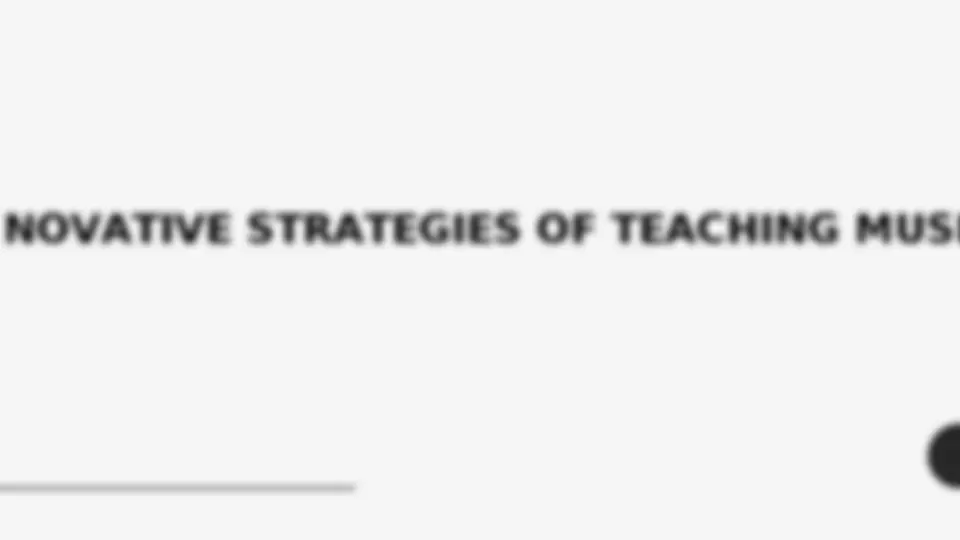


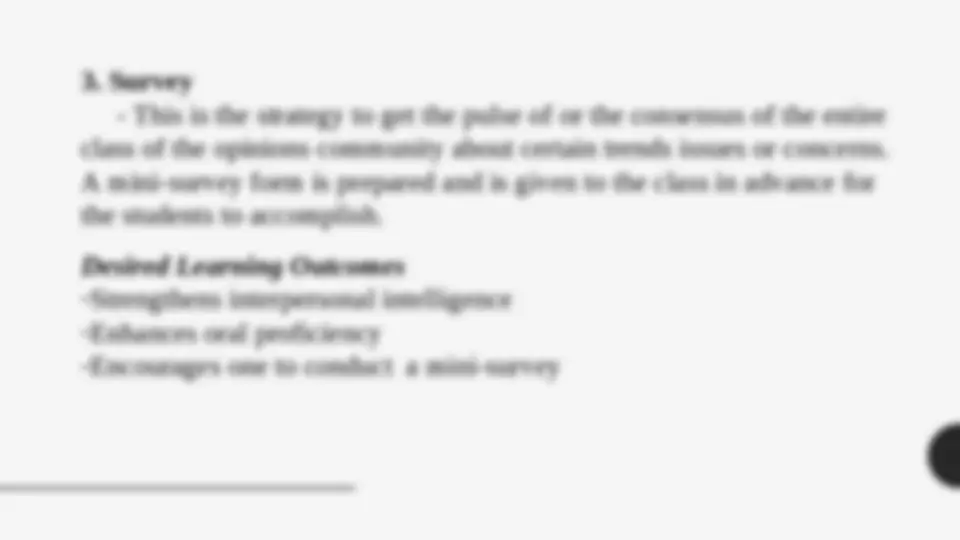
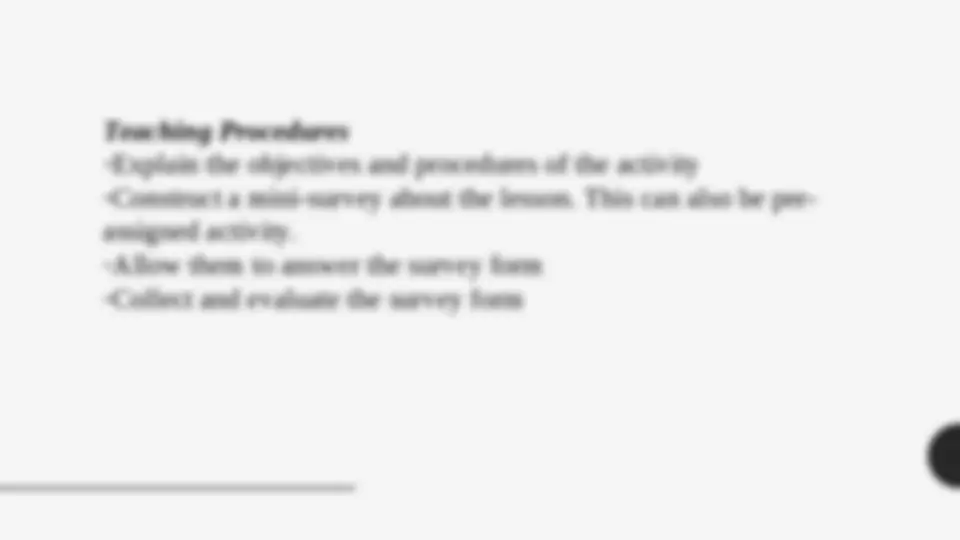
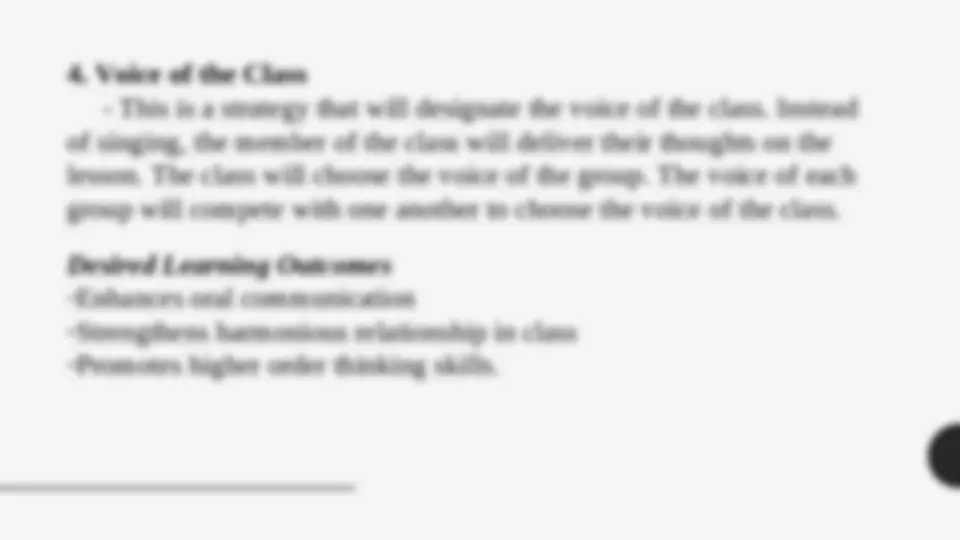
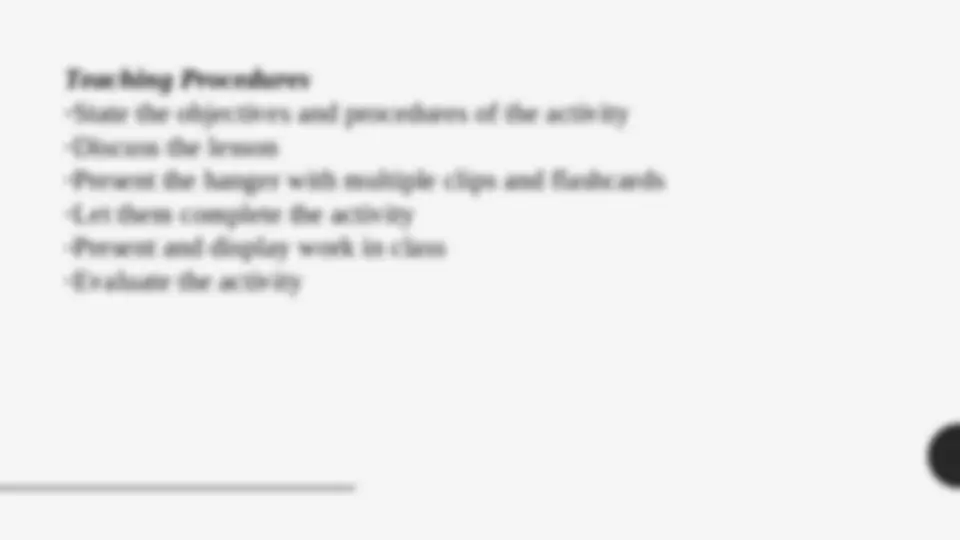
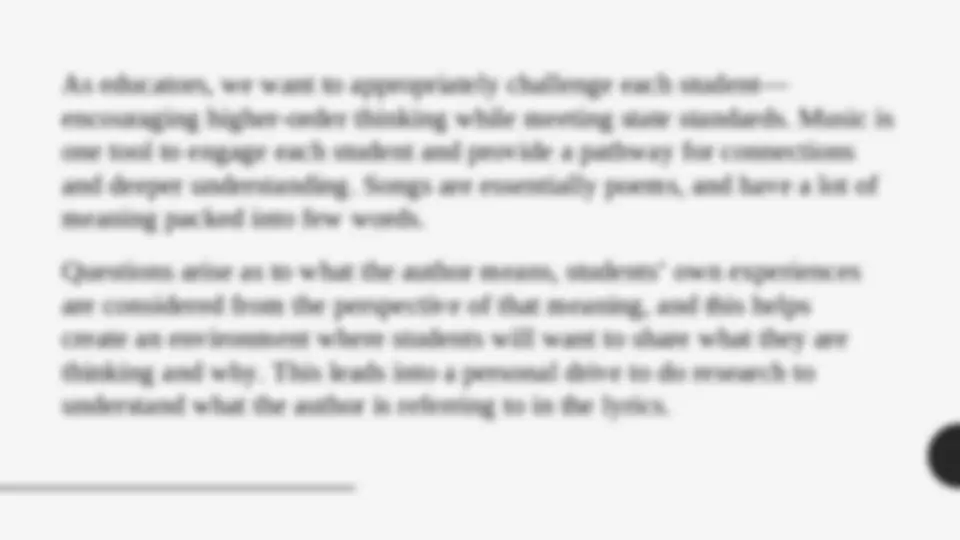
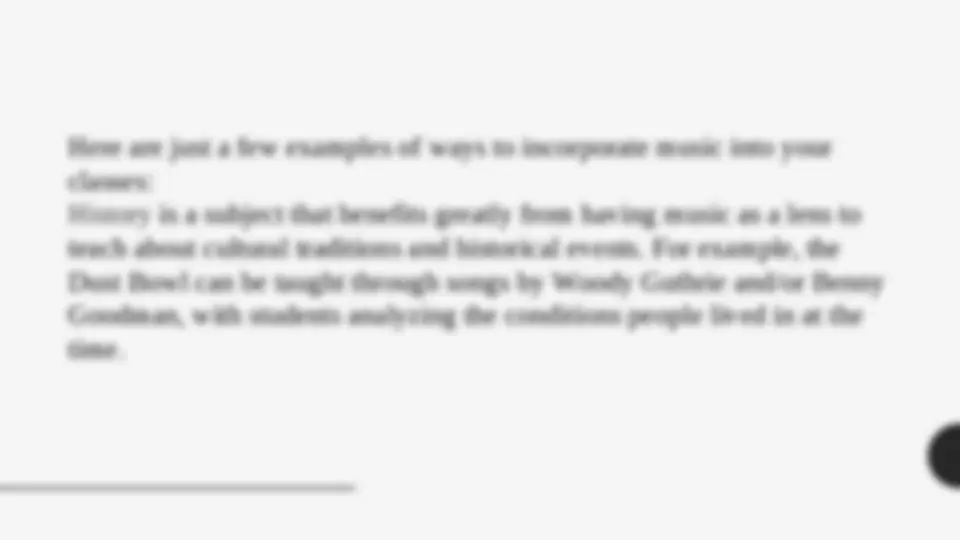
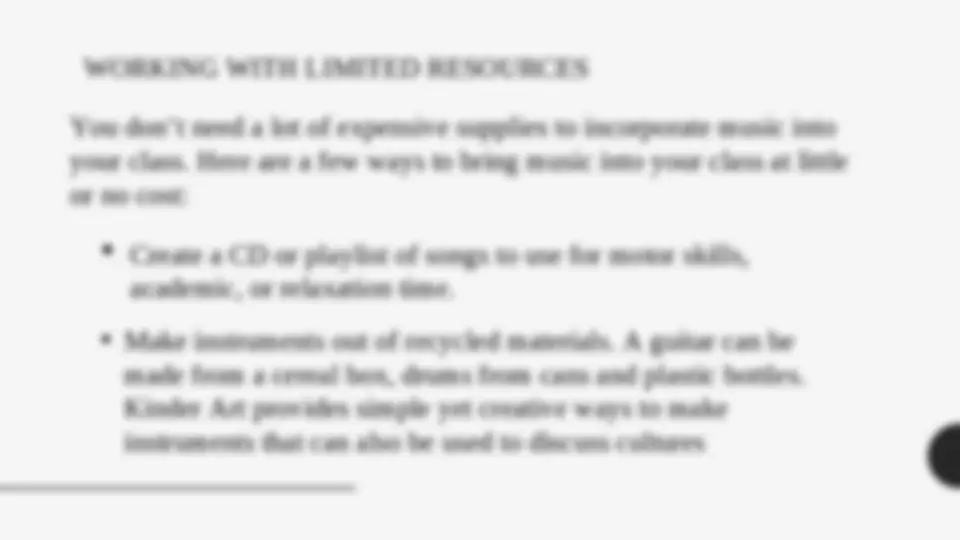
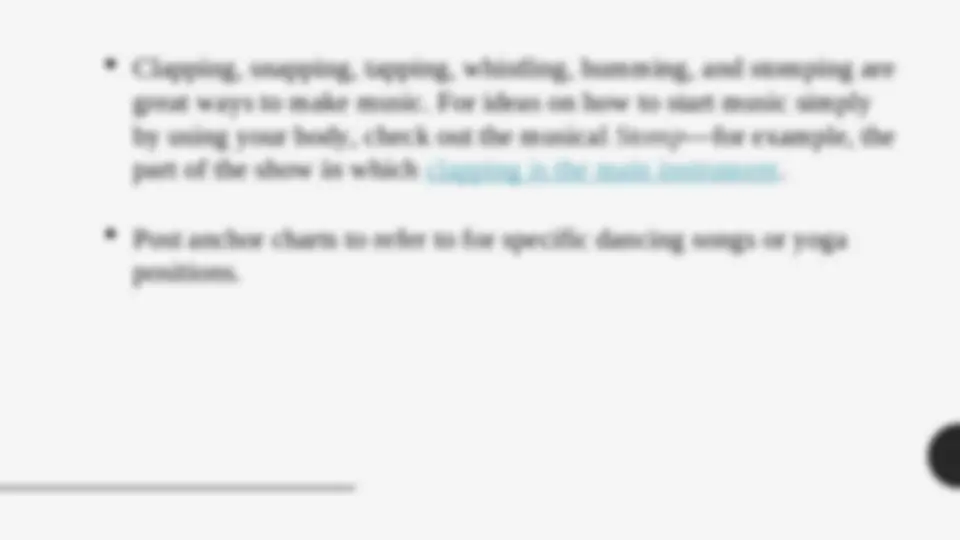
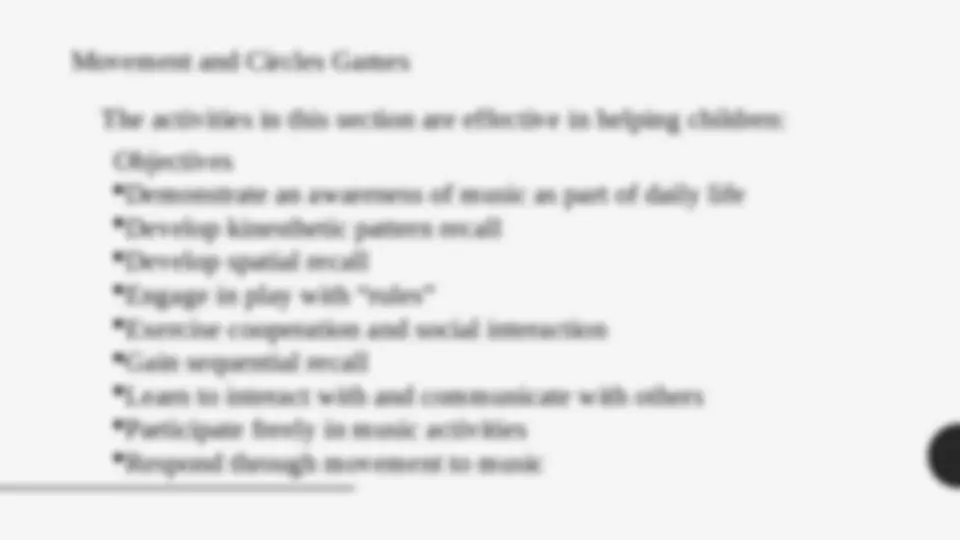
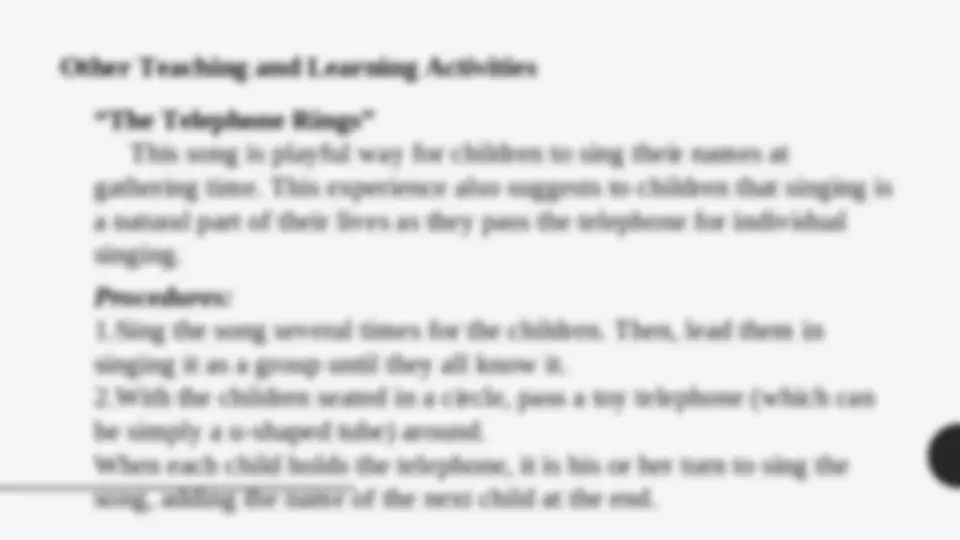
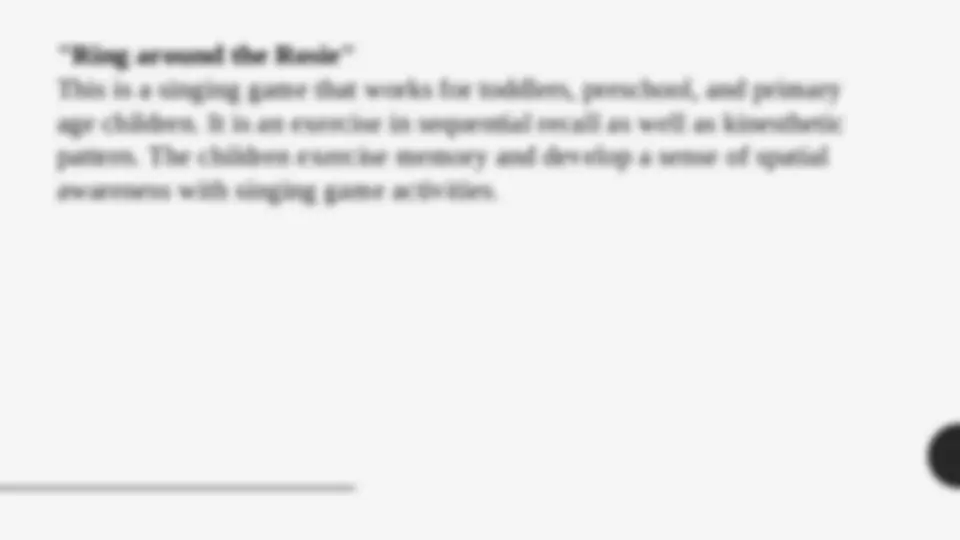
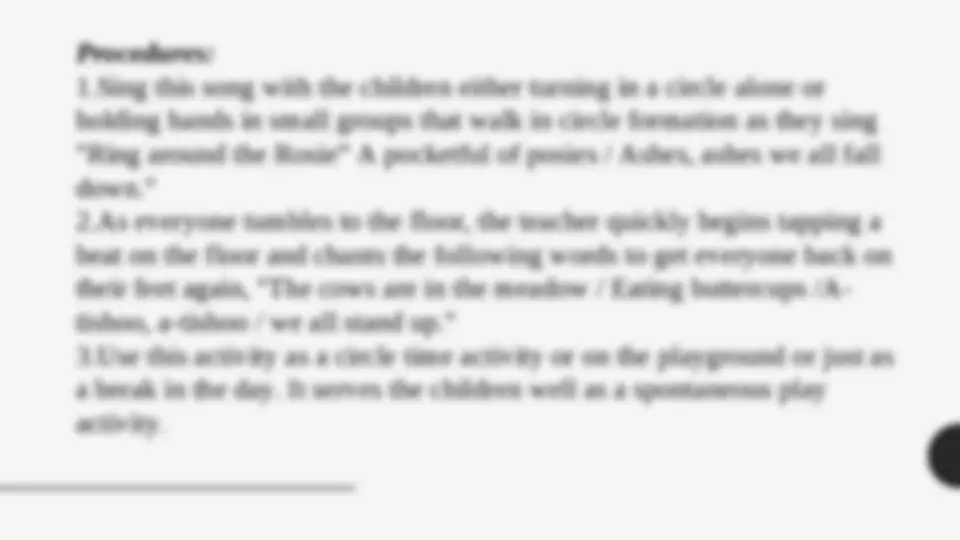
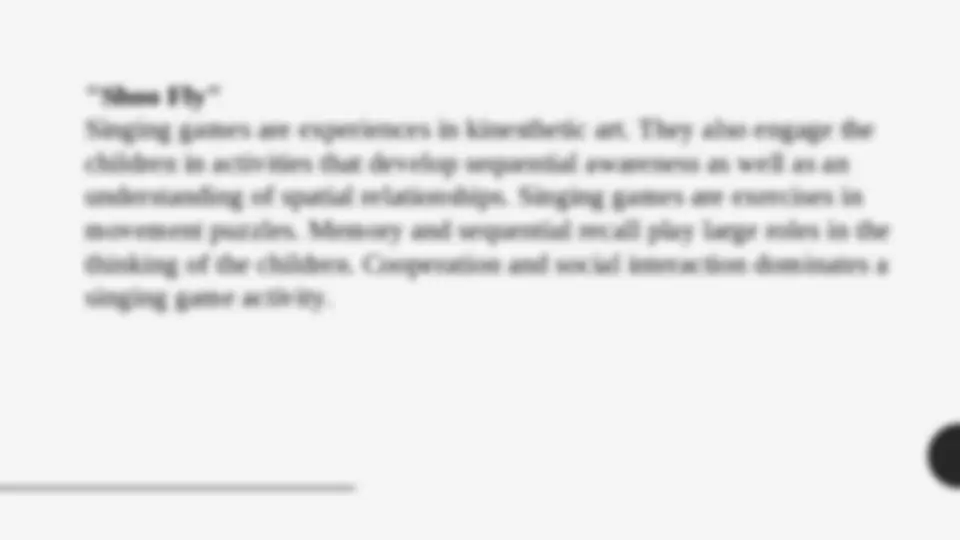
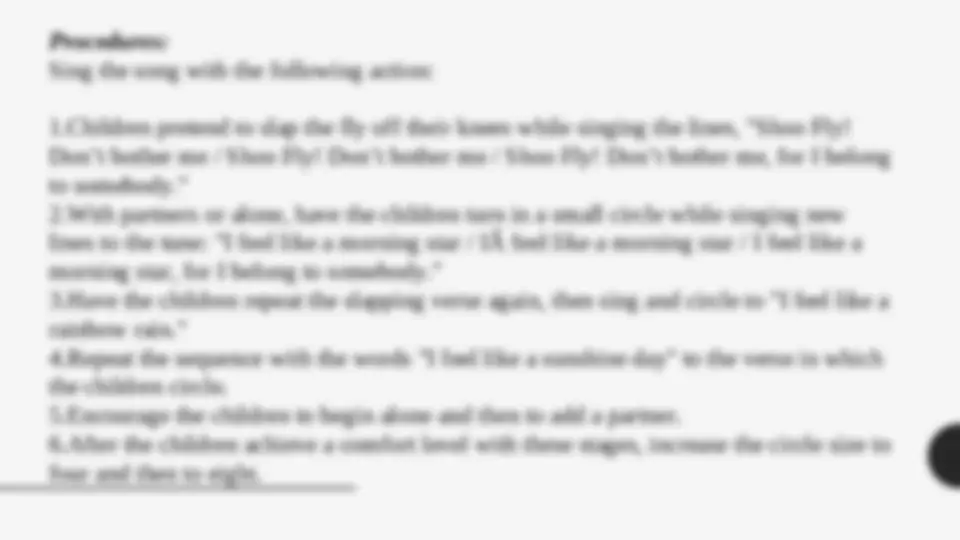
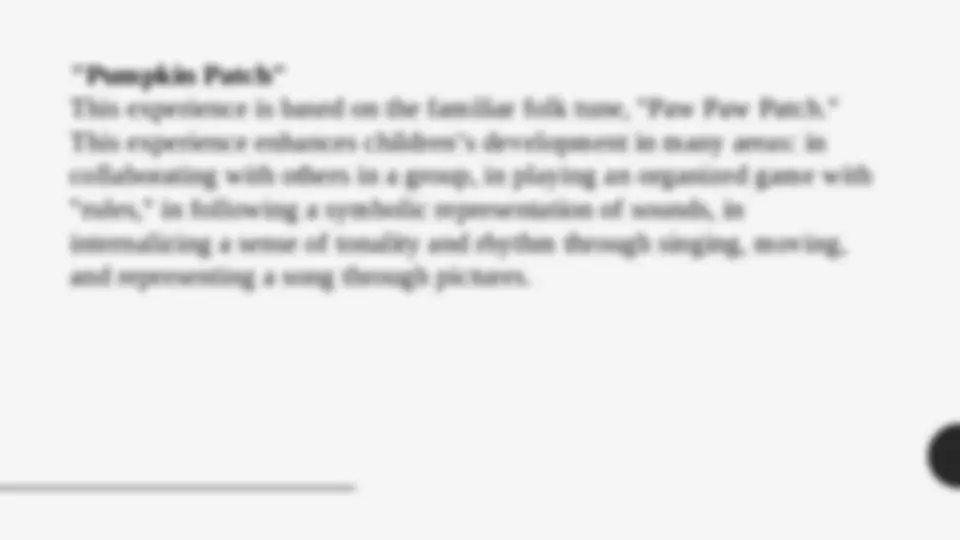
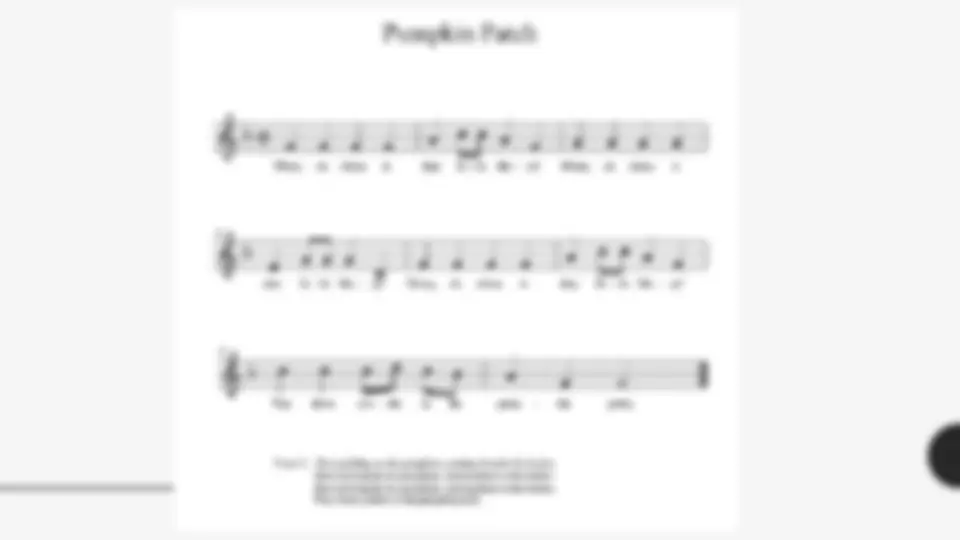
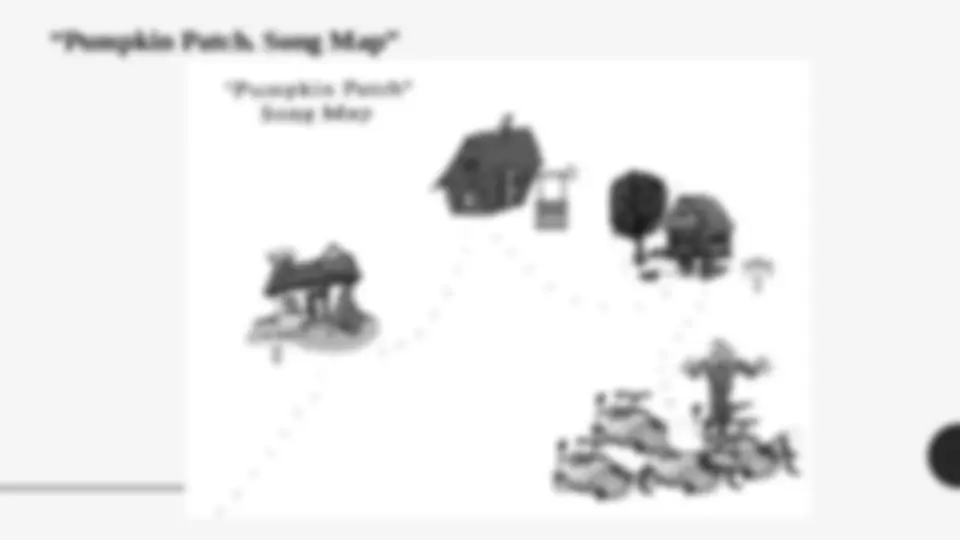
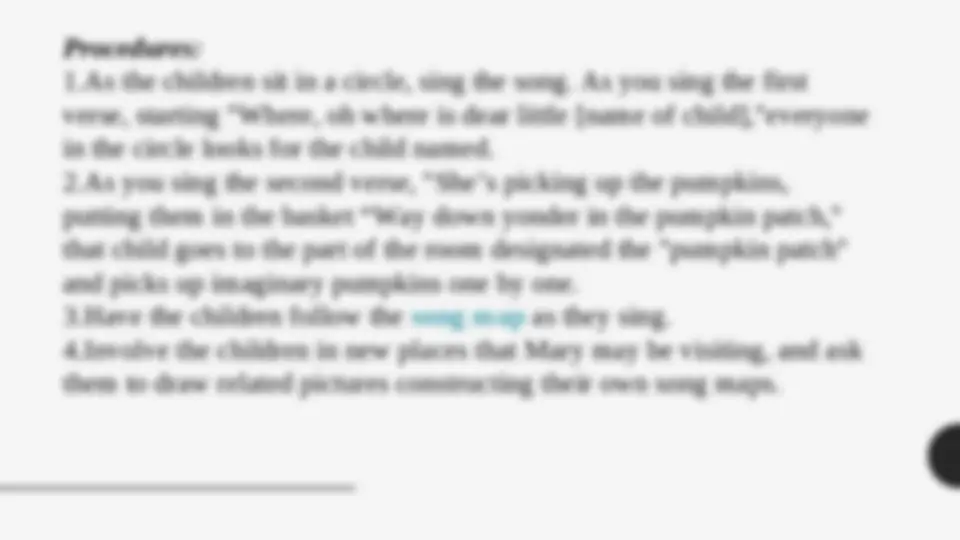

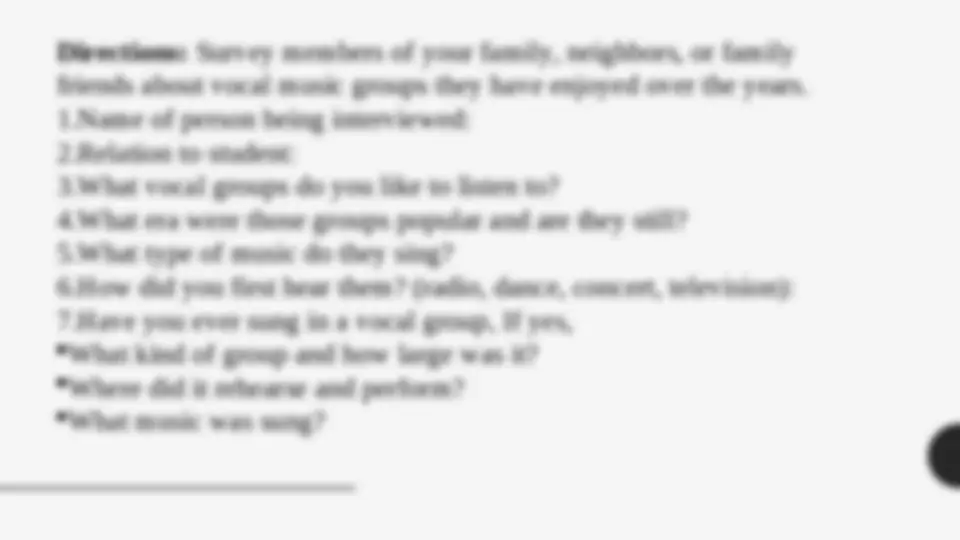
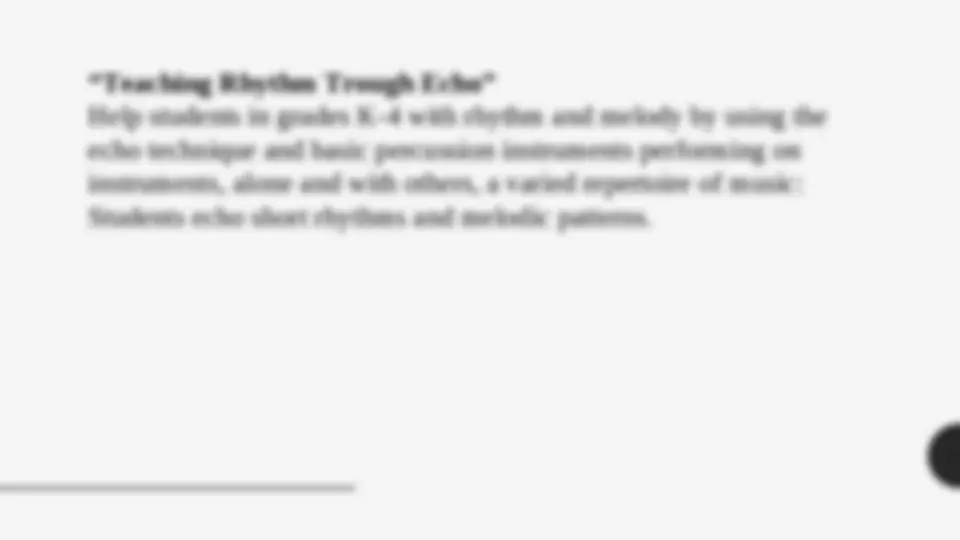
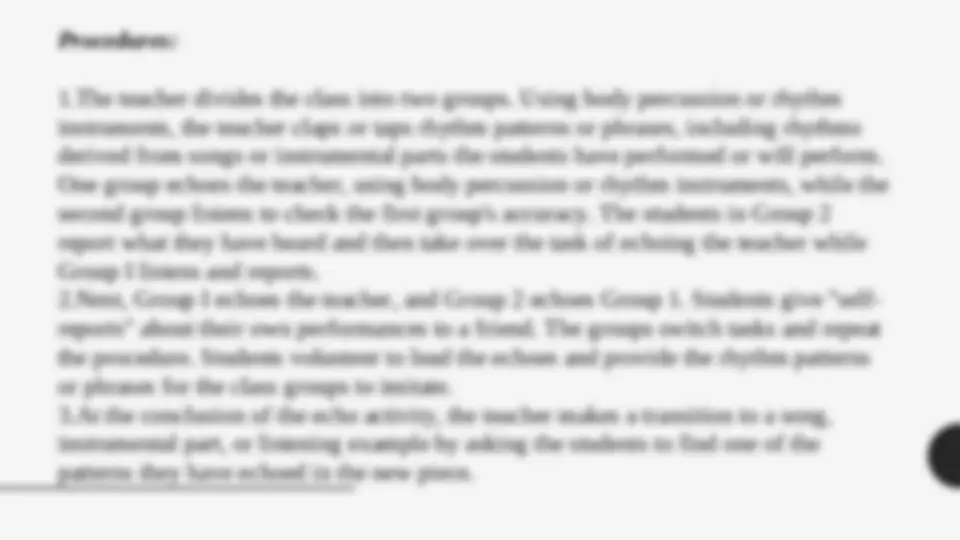
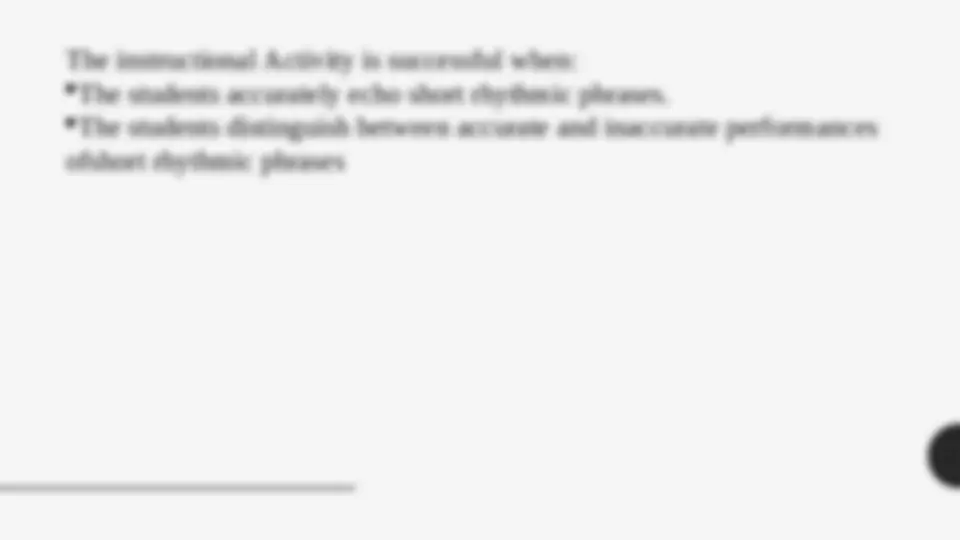
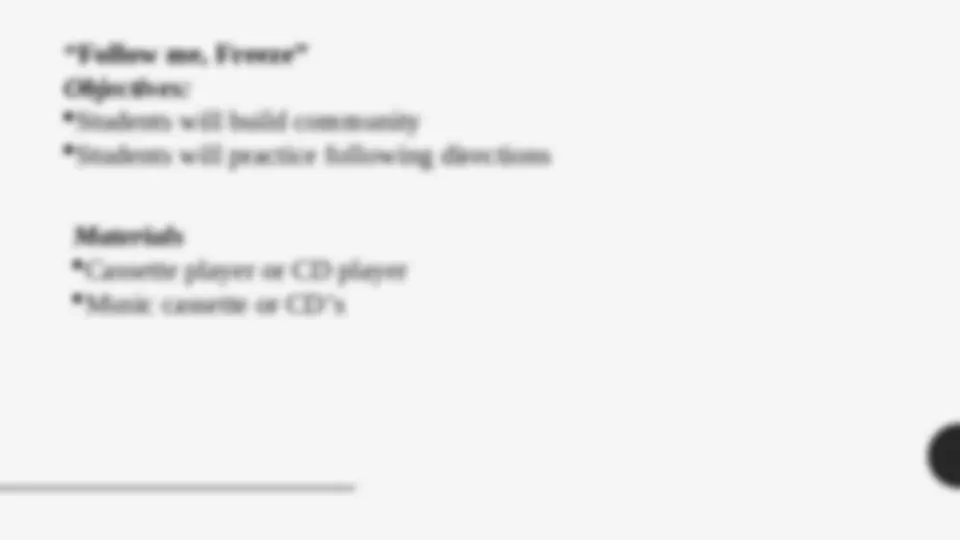
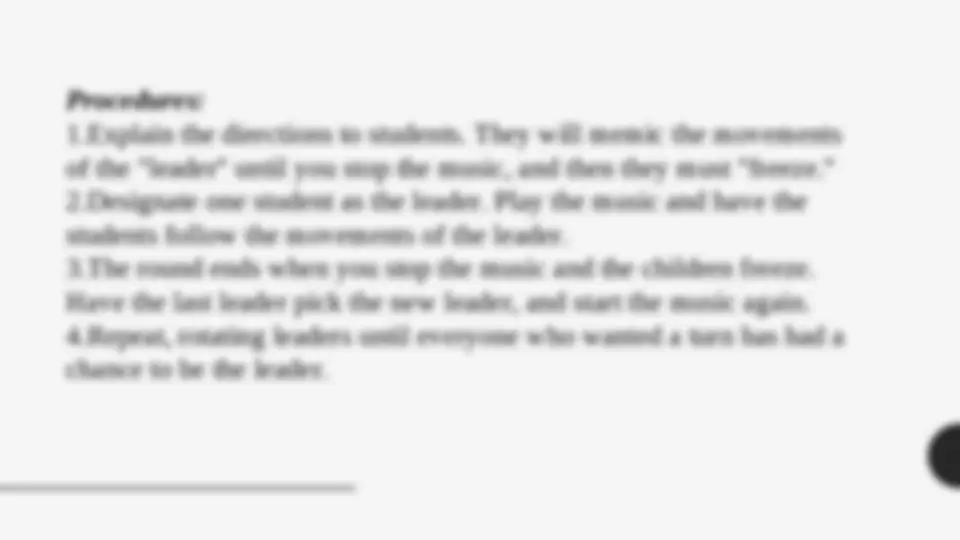
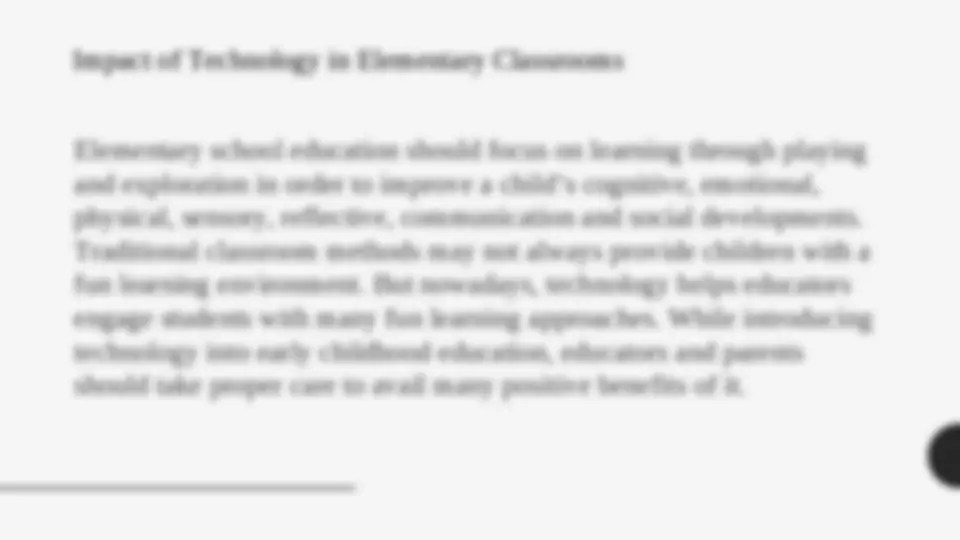
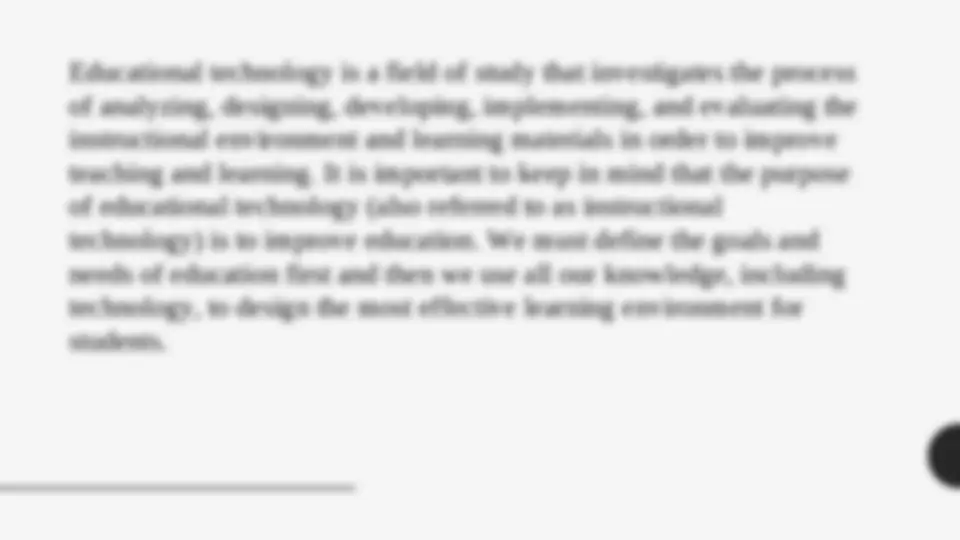

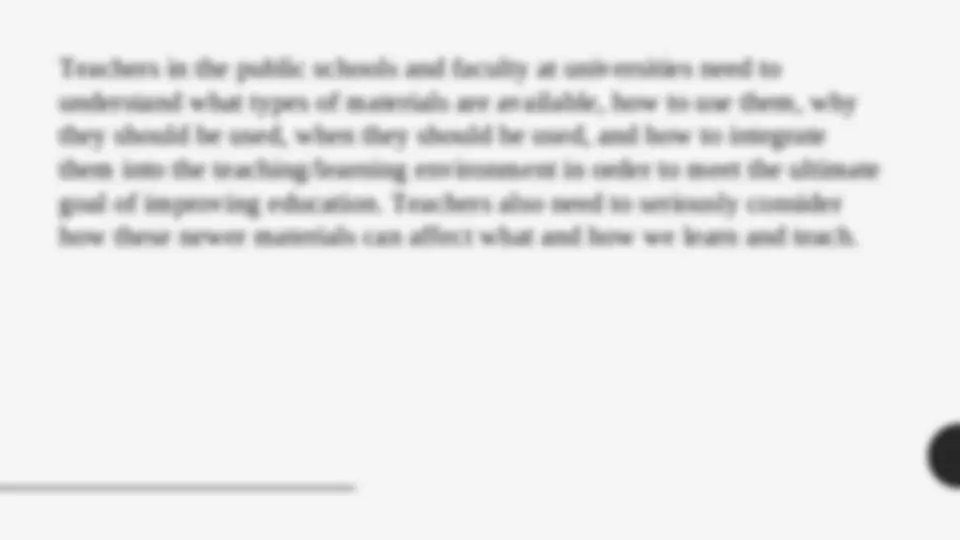
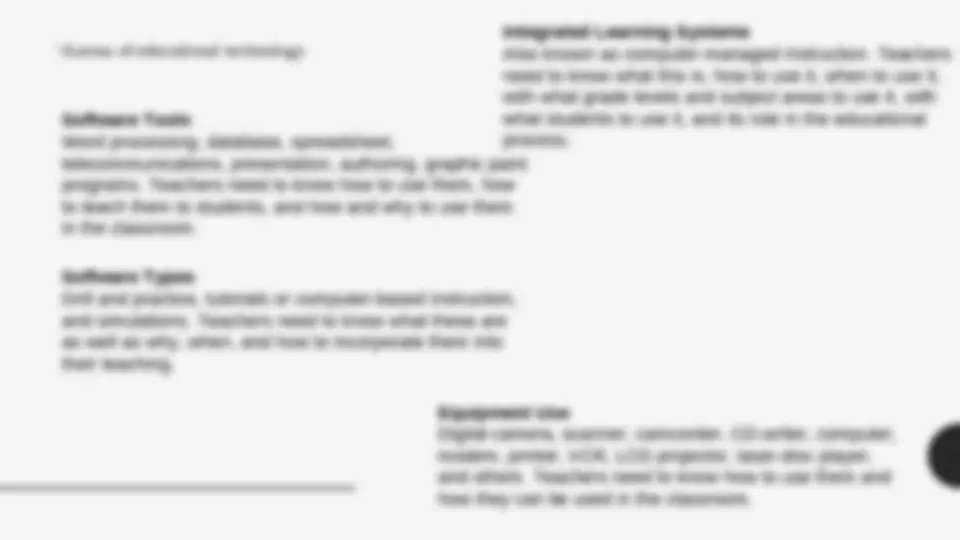
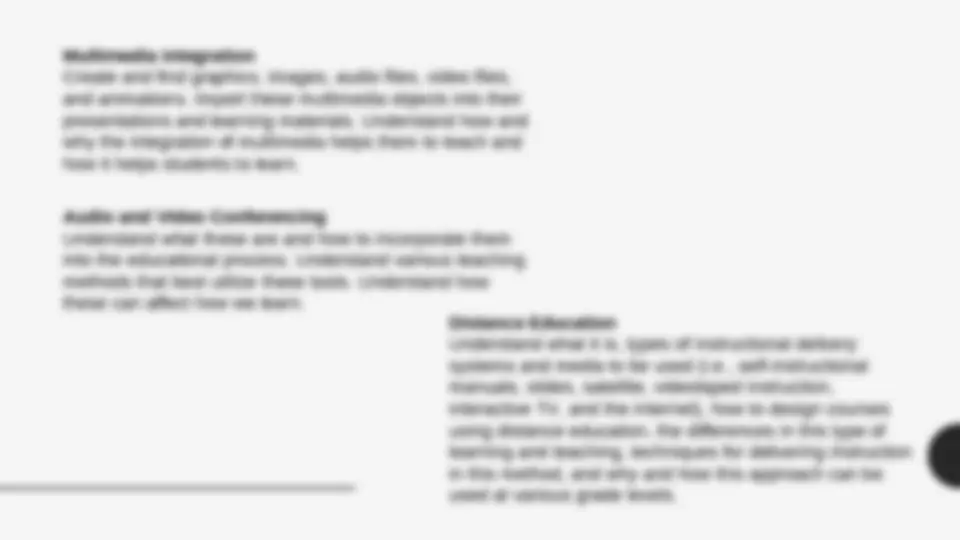
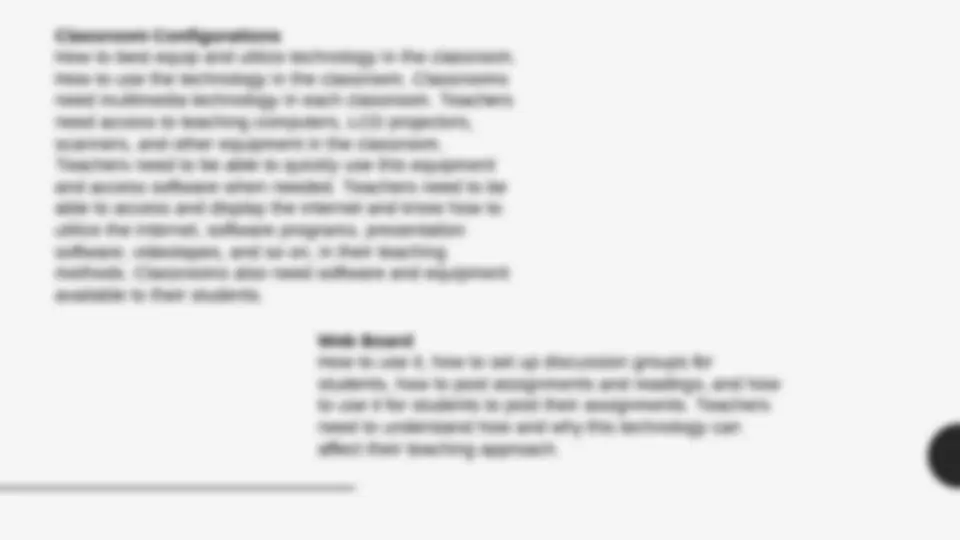
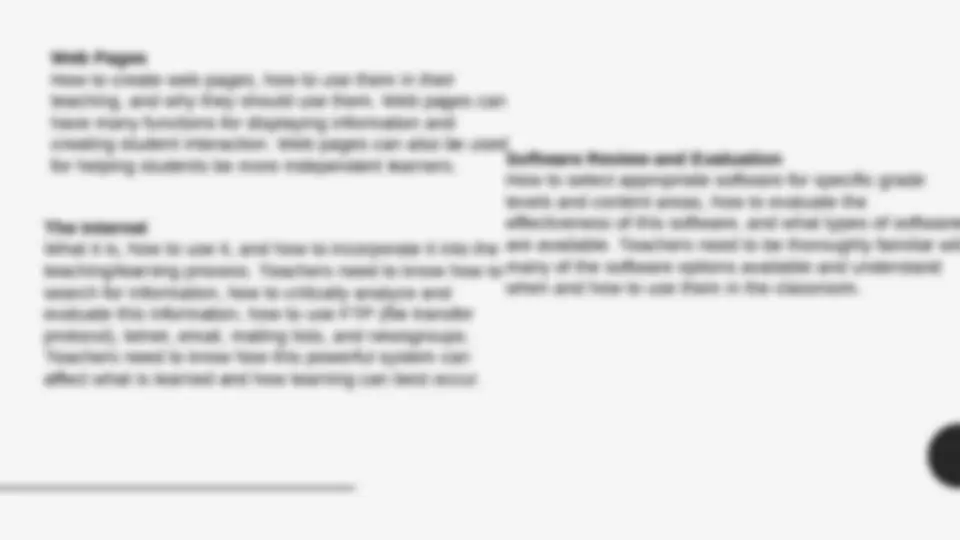
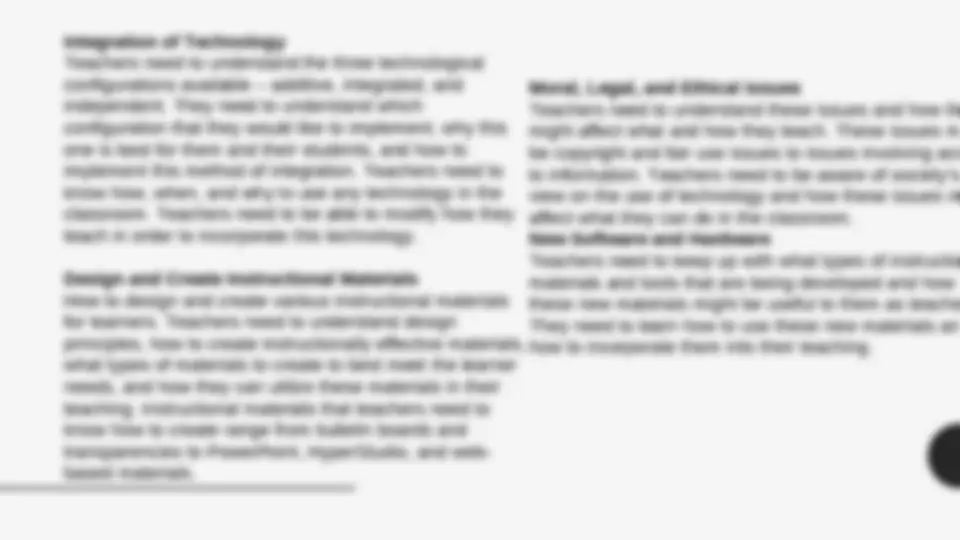
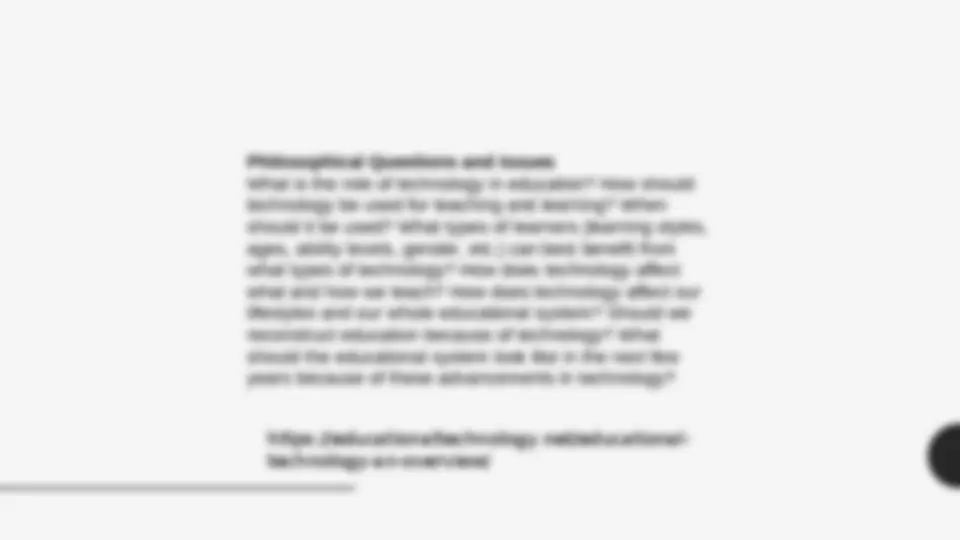


Study with the several resources on Docsity

Earn points by helping other students or get them with a premium plan


Prepare for your exams
Study with the several resources on Docsity

Earn points to download
Earn points by helping other students or get them with a premium plan
Community
Ask the community for help and clear up your study doubts
Discover the best universities in your country according to Docsity users
Free resources
Download our free guides on studying techniques, anxiety management strategies, and thesis advice from Docsity tutors
Covers the strategies and methodologies of teaching music in elementary gardes
Typology: Study notes
1 / 46

This page cannot be seen from the preview
Don't miss anything!







































Intended Learning Outcomes
At the end of the lesson students are expected to:
Demonstrate in-depth understanding of the strategies in teaching music
for today’s diverse classroom
Design personal learning activity for children
Design appropriate assessment tools for assessing music in elementary
level
1. Songfest - This strategy translates the concept/lessons learned into a song. The
class is divided into group of equal number. This serves as a culminating
activity of the lesson
Desired Learning Outcome
Strengthens musical intelligence
Allows the students to turn the lesson into song
Develops unity, teamwork and cooperation
Teaching Procedures
State the objectives and procedures of the activity
Discuss the lesson
Allow the class to group themselves in order to plan and compose the
song as a culminating activity
Let them present their songs
Evaluate the activity
Teaching Procedures
State the objectives and procedures of the activity
Discuss the lesson
Tell them about the tasks to be done. Show them the footprints.
Allow them to do the activity
Evaluate the tasks.
3. Survey - This is the strategy to get the pulse of or the consensus of the entire
class of the opinions community about certain trends issues or concerns.
A mini-survey form is prepared and is given to the class in advance for
the students to accomplish.
Desired Learning Outcomes
Strengthens interpersonal intelligence
Enhances oral proficiency
Encourages one to conduct a mini-survey
4. Voice of the Class - This is a strategy that will designate the voice of the class. Instead
of singing, the member of the class will deliver their thoughts on the
lesson. The class will choose the voice of the group. The voice of each
group will compete with one another to choose the voice of the class.
Desired Learning Outcomes
Enhances oral communication
Strengthens harmonious relationship in class
Promotes higher order thinking skills.
Teaching procedures
Explain the objectives and procedures of the
Form groups depending on the class size
Give the assigned topic of the day
Let the group designate the voice of the group to talk about the topic
Allow the group to present the voice of the group
Choose the voice of the class based on the extent of the discussion of
the said topic
Evaluate the activity
Teaching Procedures
State the objectives and procedures of the activity
Discuss the lesson
Present the hanger with multiple clips and flashcards
Let them complete the activity
Present and display work in class
Evaluate the activity
As educators, we want to appropriately challenge each student—
encouraging higher-order thinking while meeting state standards. Music is
one tool to engage each student and provide a pathway for connections
and deeper understanding. Songs are essentially poems, and have a lot of
meaning packed into few words.
Questions arise as to what the author means, students’ own experiences
are considered from the perspective of that meaning, and this helps
create an environment where students will want to share what they are
thinking and why. This leads into a personal drive to do research to
understand what the author is referring to in the lyrics.
Mathematics can be challenging for students to understand because
the concepts are abstract, which is the main reason it’s important to
provide visuals and manipulatives to students when first teaching a
concept. Musical notes can help teach fractions, changing
instruments but playing the same song can help teach patterns, and
using pitch can help with frequency and ratios.
Science can benefit from songs that teach about the skeletal system
or incorporate mnemonics to help students remember the food
chain. Music can be the content for teaching about sound waves and
having children experience frequency with relation to pitch.
Literacy improves when a student is able to pick up on the patterns in
the structure of language and is able to differentiate between pitches in
words that sound similar but have different meanings. Music can be
utilized as a metaphor to explain elements of a story such as character,
setting, conflict, and resolution, using the melodies, instruments,
tempos, and dynamics as the teaching lens.
Clapping, snapping, tapping, whistling, humming, and stomping are
great ways to make music. For ideas on how to start music simply
by using your body, check out the musical Stomp —for example, the
part of the show in which clapping is the main instrument.
Post anchor charts to refer to for specific dancing songs or yoga
positions.
Movement and Circles Games
The activities in this section are effective in helping children:
Objectives
Demonstrate an awareness of music as part of daily life
Develop kinesthetic pattern recall
Develop spatial recall
Engage in play with “rules”
Exercise cooperation and social interaction
Gain sequential recall
Learn to interact with and communicate with others
Participate freely in music activities
Respond through movement to music